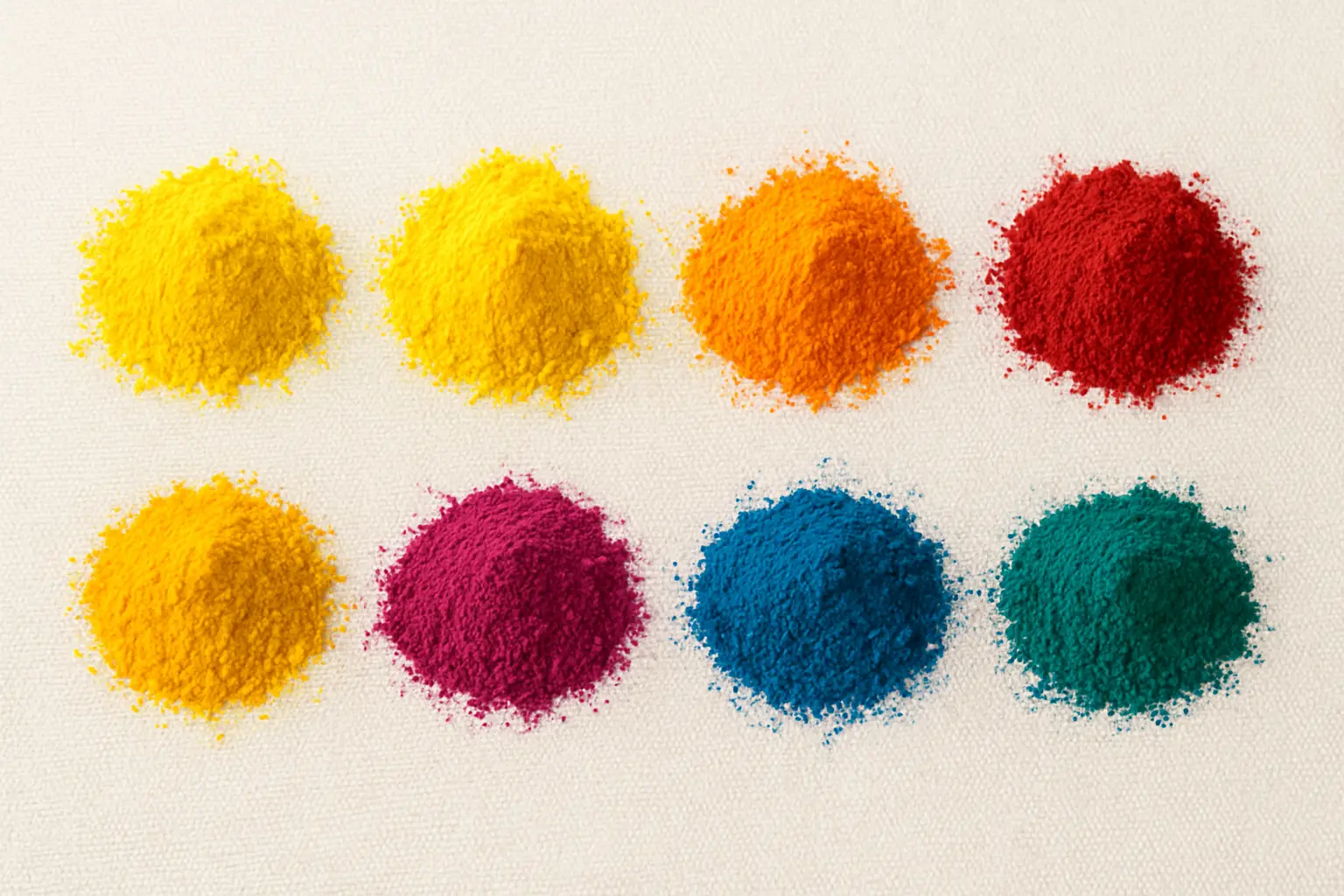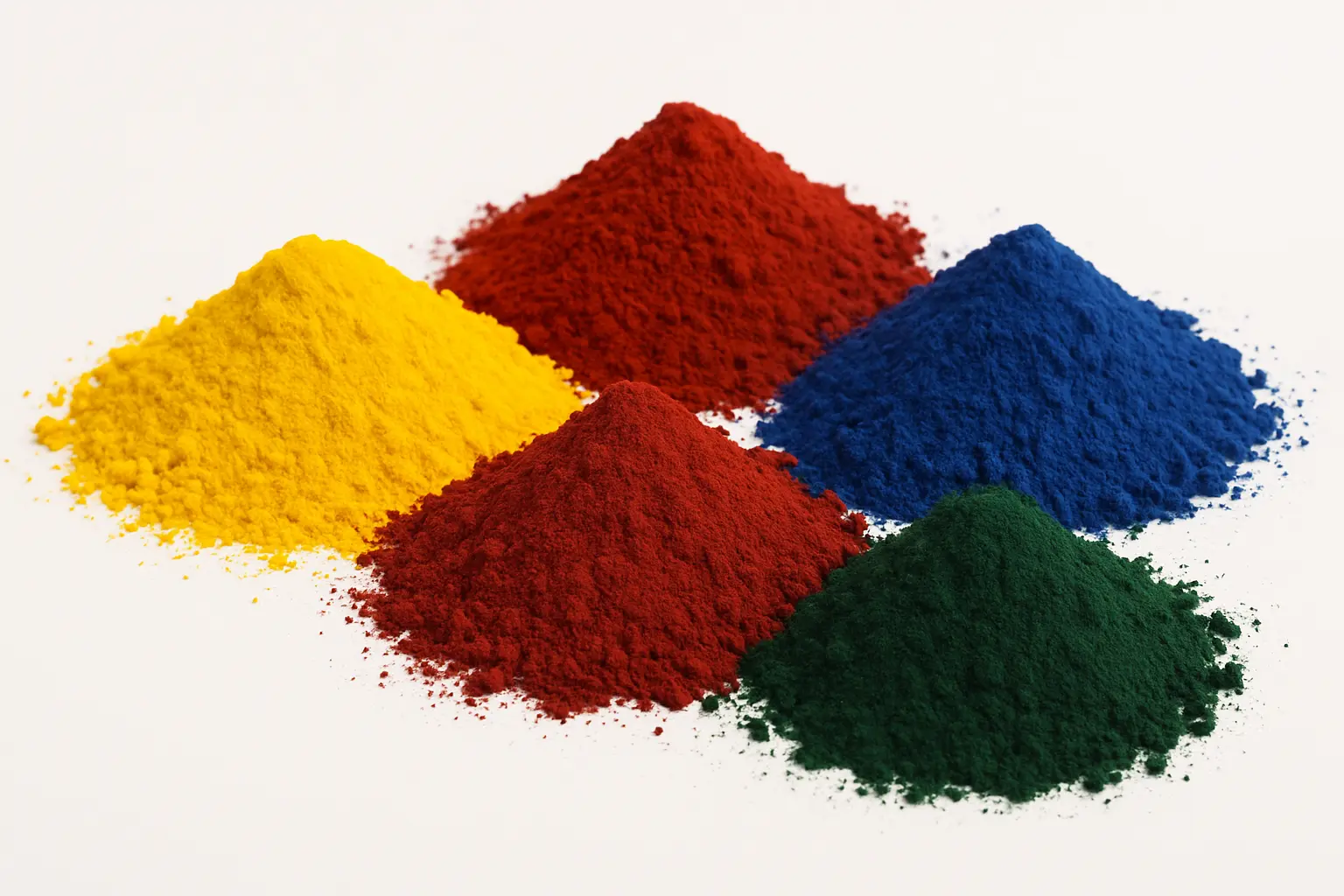Natural colorants are pigments derived from natural sources such as plants, animals, or minerals. They are widely used as alternatives to synthetic dyes in industries like food, cosmetics, and pharmaceuticals. While they offer several benefits, there are also some limitations to consider.

Advantages of Natural Colorants
- Higher Safety
Compared to synthetic dyes, natural colorants are generally considered safer, particularly in food applications. Since they are derived from edible plants or animals, they pose a lower risk of allergies or toxicity. For example, beetroot red and carotenoids not only provide color but also offer nutritional benefits. - Eco-friendly
The production of natural colorants has a smaller environmental footprint. The raw materials are renewable, and the extraction process requires fewer chemical treatments, reducing the environmental impact. Waste from natural pigment production is easier to manage and less harmful to the environment. - Consumer Preference
As consumers become more health-conscious and environmentally aware, there is a growing demand for products with natural ingredients. Natural colorants are perceived as healthier and “cleaner,” making them popular in the food and cosmetics industries. Labels indicating the use of natural colorants are often favored by consumers. - Health Benefits
Some natural pigments offer more than just color; they also provide health benefits. For example, carotenoids (which produce orange and yellow hues) have antioxidant properties that help protect cells from free radical damage. Anthocyanins (blue and purple pigments) can improve vascular health, reduce inflammation, and offer antioxidant benefits.
Disadvantages of Natural Colorants
- Lower Stability
Natural pigments are more sensitive to environmental factors such as light, heat, oxygen, and pH changes, causing them to fade or lose their vibrancy. For example, lycopene (found in tomatoes) is highly sensitive to light and oxygen, which can degrade its color during storage. Special packaging and storage conditions are needed to maintain stability, adding to production complexity and cost. - Limited Color Range
The available color palette from natural sources is limited, particularly for vibrant blues, greens, and blacks. This limits the use of natural pigments in certain applications. For instance, producing colorful candies or packaging designs often requires synthetic dyes for bright, diverse colors that natural pigments cannot easily achieve. - Higher Cost
Extracting natural colorants is labor-intensive and costly due to complex processing and limited yields. Additionally, the supply of natural pigments can be inconsistent, influenced by seasonal and environmental factors, further driving up costs. For example, saffron and carmine are both expensive to produce due to the labor-intensive extraction processes. - Potential Odor or Flavor Issues
Some natural colorants retain the smell or taste of their source materials, which may affect the sensory qualities of the final product. For instance, spirulina-based blue pigments may have a slight seaweed odor, which could be undesirable in certain foods or cosmetics.
Application Areas of Natural Colorants
- Food Industry
Natural colorants are widely used in food products to enhance appearance and appeal. Common examples include:- Beetroot Red: Used in meat products, beverages, and ice cream to create red or pink hues.
- Paprika Oleoresin: Applied in sauces, seasonings, ham, and sausages for bright red color.
- Carotenoids: Used in dairy products, beverages, and baked goods for orange and yellow shades.
- Flavonoids: Extracted from citrus fruits, used in candy and drinks to provide yellow hues.
- Chlorophyll: Applied in beverages, confectionery, and dairy products to create green shades.
- Cosmetics Industry
Natural colorants are popular in cosmetics, especially in lipsticks, blushes, foundations, and eyeshadows. Consumers favor natural ingredients for their perceived skin benefits and lower risk of irritation. Examples include:- Carmine: A red dye extracted from cochineal insects, commonly used in lipsticks and blushes.
- Anthocyanins: Extracted from blueberries and purple cabbage, used in eyeshadows and blushes for purple or blue shades.
- Mineral Pigments: Such as titanium dioxide and iron oxide, used in foundations and concealers for natural skin tones.
- Pharmaceutical Industry
Natural colorants are used to color pharmaceutical products like tablets and capsules, helping to differentiate between medications and improve patient compliance. Examples include:- Carotenoids: Used in soft gel capsules and tablet coatings to provide bright colors for better market recognition.
- Copper Chlorophyllin: Applied to pill coatings, offering green hues while also improving the stability of the product.
- Red Yeast Rice: Used in pharmaceutical coatings to provide a red or purple shade.
- Textile Dyes
While synthetic dyes dominate the textile industry, natural colorants are still used in niche markets, particularly for eco-friendly and sustainable fashion. Examples include:- Indigo: Extracted from indigo plants, used to dye denim and other fabrics blue.
- Madder Root: A natural red dye used to color fabrics.
- Curcumin: Extracted from turmeric, used for yellow or orange hues in textiles.
Future Trends for Natural Colorants
As environmental awareness and consumer demand for natural, healthier products continue to grow, the application of natural colorants is expanding. Key future trends include:
- Technological Advancements: Biotechnologies such as microbial fermentation and enzyme reactions are improving the stability, yield, and cost-effectiveness of natural pigments.
- Cross-Sector Applications: Beyond traditional uses in food, cosmetics, and pharmaceuticals, natural colorants are being explored in areas such as packaging materials and eco-friendly coatings.
- Functional Expansion: In addition to coloring, natural pigments are being developed for their health benefits, such as antioxidants and anti-aging properties, opening up opportunities in functional foods and supplements.
For more information about natural colorants and how they can enhance your product formulations, visit WPA Chem’s website.









